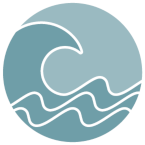Several factors necessitate a strong interaction between the TCS Tsunami and the broader global tsunami community, other geoscience communities, or researchers or practitioners dealing with multi-hazard and multi-risk problems. By nature, tsunamis cascade from other hazards such as earthquakes, landslides, and volcanoes, and tsunami research is hence tightly linked with seismology, volcanology, meteorology, and engineering geology. Moreover, the transnational impact of tsunami propagation and induced risk implies that tsunami research needs to think global. Hence, integrating the tsunami community with related science networks is imperative.
The EPOS TCS Tsunami originated from the European branch of the global research network named the Global Tsunami Model (GTM). GTM is a broad tsunami community initiative started in 2015 to improve and standardize tsunami hazard and risk assessment and provide reference maps, tools, and guidelines. GTM presently includes more than 30 signed partners across the world. In 2019, the EU funded the related network COST Action AGITHAR (Accelerating Global science In Tsunami HAzard and Risk analysis), a networking initiative to consolidate the European part of GTM. One of the main scopes of both GTM and AGITHAR has been to identify measures for sustainable service provision within tsunami science. The EPOS delivery framework is a natural candidate for providing a long-lasting service provision with a strong focus on interoperability. Moreover, the link to other TCSs such as Seismology, Near-Fault Observatories, and Volcano Observations within EPOS represents strong possibilities for synergies.
More widely, the TCS Tsunami is further highly relevant to several networks in other disciplines. First, on service provision towards global stakeholders such as UNDRR and GFDRR dealing with multi-hazard and multi-risk mapping, dissemination, and mitigation measures. An important initiative here is further the Global Risk Assessment Framework (GRAF) that aims to connect risk practitioners across sectors to fulfil the Sendai Framework of Disaster Risk Reduction (SFDRR) goals. Secondly, towards adjacent hazards models and networks such as the Global Earthquake Model (GEM), the Global Volcano Model (GVM), and the World Landslide Forum (WLF). In addition, the tsunami community participates in important multi-hazard modelling such as the H2020 ChEESE project that promotes next-generation High-Performance Computing (HPC) modelling tools towards Exascale modelling.
